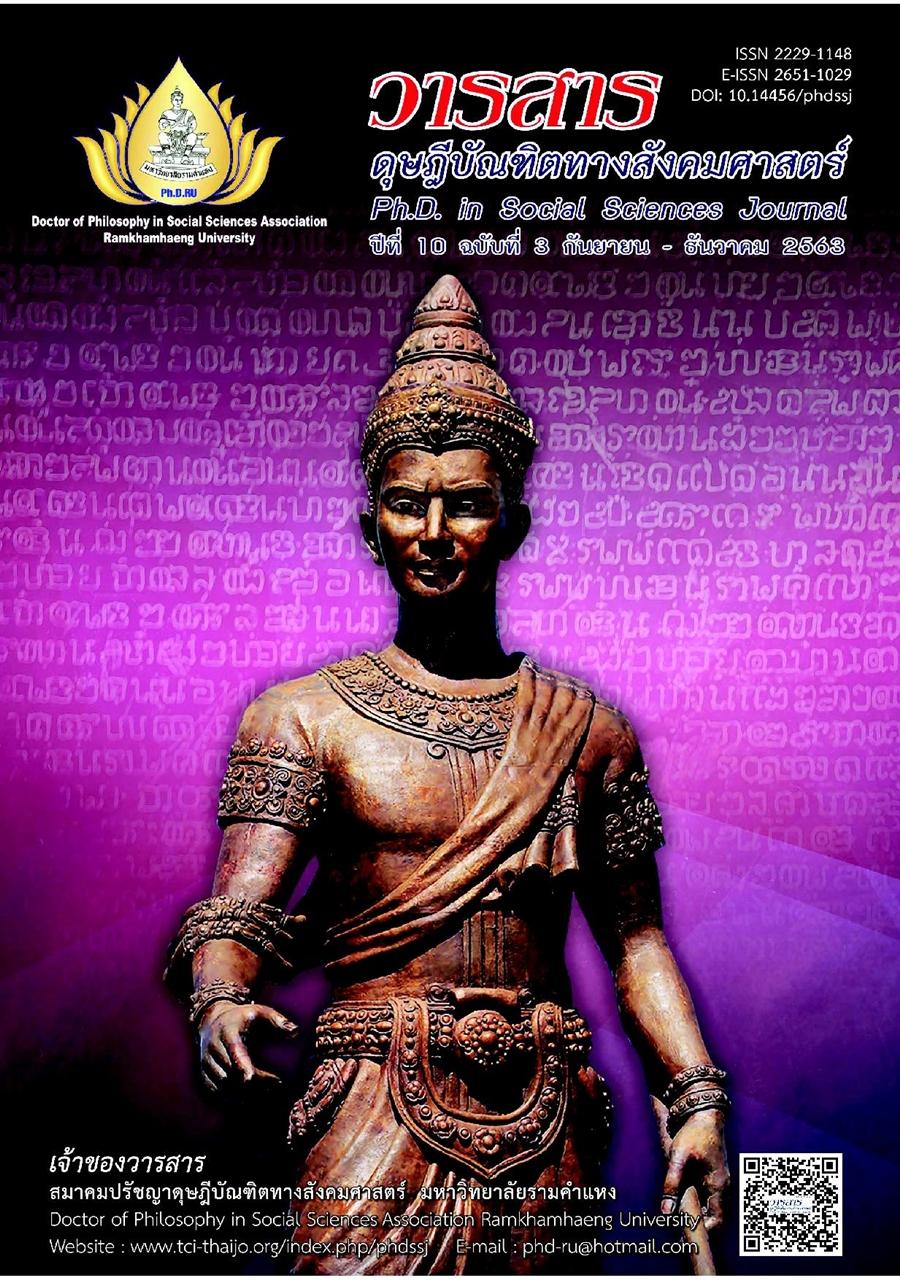The New Dimension of Travel with the Use of Technology In Automated Passenger Clearance System
Main Article Content
Abstract
This academic article aims to analyze the new dimension of travel with the use of technology in automated passenger clearance system. Today society is full of data, information and borderless communications. Due to communication technology is modern and people are able to connect the world without barriers of time, distance and personal information retrieval, the Immigration Office therefore has a policy to initiate the concept of an automatic passport detection system, an automated border control system widely used by many countries, to support the expansion of tourists and support the expansion of labors to increase the capability of facilitations, speed of service, reduce the congestion problem and delays in passport verification.
The analysis results showed that there is an important link between social influences and innovativeness in technologies. They are important factors for technology acceptance. The technology acceptance model comprises five main factors: external variables, perceived usefulness of technology, perceived ease of use, attitude toward the use and relationship between theoretical factor and planned behavioral theory. All factors are correlated leading to the actual use of technologies. This will cause an behavioral intention of customer continuously.
Article Details
Academic articles, research articles, and book reviews in the Ph.D. in Social Sciences Journal are author’s opinions, and not the publisher’s, and is not the responsibility of the Ph.D. in Social Sciences Journal Philosophy Association, Ramkhamhaeng University. (In the case that research is done on human, the researcher has to be trained in Ethics for Doing Research on Human Training and has to produce the evidence of the training).
References
Ajzen, I. (1985). From intention to actions: A theory of planned behavior. In: J. Kuhl, & J. Beckmann (Eds.), Action control: From cognition to behavior (pp. 131-146). Springer-Verlag.
Chang, H. L., & Yang, C. H. (2008). Do airline self-service check-in kiosks meet the needs of passengers?. Tourism Management, 29(5), 980-993.
Cho, H., & Fiorito, S. S. (2010). Self-service technology in retailing: The case of retail kiosks. Symphonya Emerging Issues in Management, 1, 43-55.
Dabholkar, P. A. (1996). Consumer evaluations of new technology-based self-service options: An investigation of alternative models of service quality. International Journal of Research in Marketing, 13(1), 29-51.
Davis, F. D., Bagozzi, R. P., & Warshaw, P. R. (1989). User acceptance of computer technology: A comparison of two theoretical models. Management Science, 35(8), 982-1003.
Immigration Bureau. (2020). Annual report. Retrieved from http://www.immigration.go.th/nov2004/base.php?page=stat [In Thai]
Lassar, W. M., Manolis, C., & Lassar, S. S. (2005). The relationship between consumer innovativeness, personal characteristics, and online banking adoption. International Journal of Bank Marketing, 23(2), 176-199.
Lin, J. S. C., & Hsieh, P. L. (2007). The influence of technology readiness on satisfaction and behavioral intentions toward self-service technologies. Computers in Human Behavior, 23(3), 1597-1615.
Maesincee, S. (2016). Thailand 4.0: Create new economy. Retrieved on 16 November 2018, https://www.facebook.com/drsuvitpage/posts/1396306724009387 [In Thai]
Meuter, M. L., Ostrom, A. L., Roundtree, R. I., & Bitner, M. J. (2000). Self-service technologies: Understanding customer satisfaction with technology-based service encounters. Journal of Marketing, 64(3), 50-64.
Office of the National Economic and Social Development Council. (2020a). National economic and social development plan No.12 (2017-2021). Author. [In Thai]
Office of the National Economic and Social Development Council. (2020b) National strategy (2018-2037). Retrieved from http://nscr.nesdb.go.th/wp-content/uploads/2019/10/National-Strategy-Eng-Final-25-OCT-2019.pdf [In Thai]
Rogers, E. M. (1983). Diffusion of innovations (3rd ed.). The Free Press.
Strategy Division Office of Police Strategy. (2020). Police strategy (2018-2037). Retrieved from http://www.royalthaipolice.go.th/downloads/strategy.pdf [In Thai]
Zeithaml, V. A., Berry, L. L., & Parasuraman, A. (1996). The behavioral consequences of service quality. Journal of Marketing, 60(2), 31-46.


